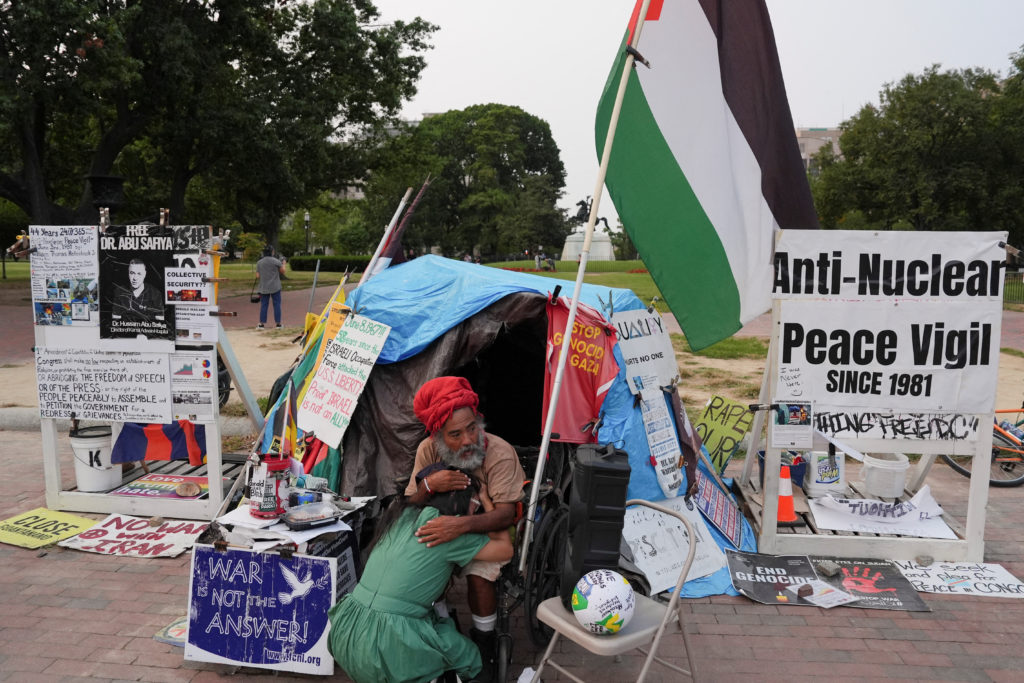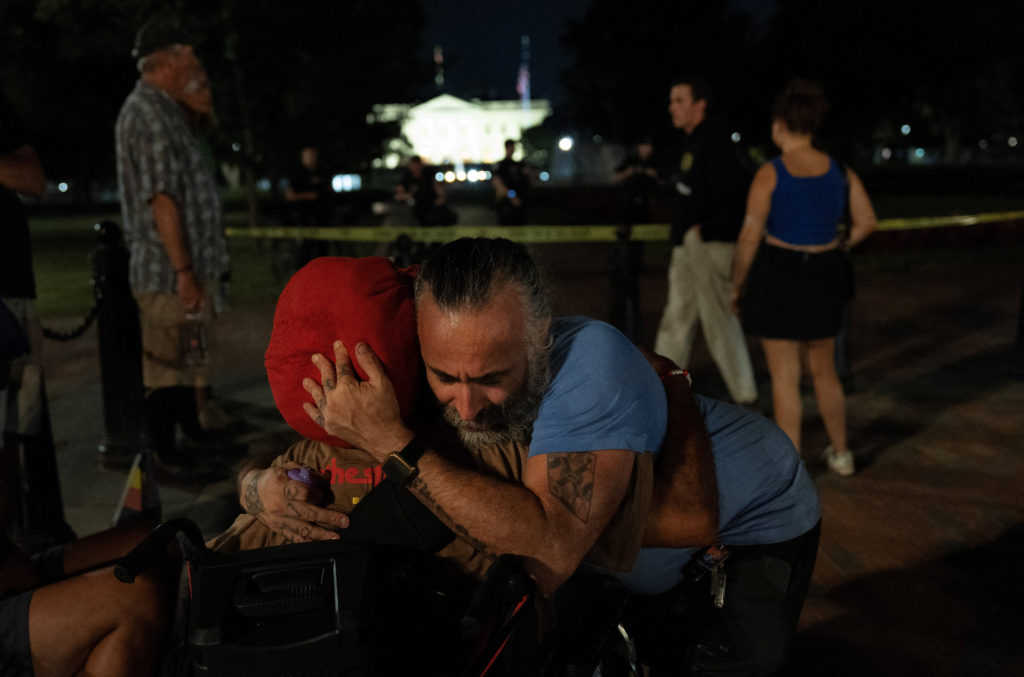President Donald Trump on Friday directed the removal of the blue tent that has stood for decades as a peace vigil across from the White House in Lafayette Park. The tent, which has been maintained continuously since 1981, has long served as a symbol of anti-nuclear activism and ongoing calls for global peace. Its presence has made it one of the longest-running protest sites in the United States.
During a meeting in the Oval Office, Trump addressed the matter directly, stating, “Take it down today, right now.” He added that he had previously been unaware of the tent’s existence, indicating that the longstanding vigil had not come to his attention until the discussion with reporters.
The president’s comments came after Brian Glenn, a journalist with the conservative outlet Real America’s Voice, asked about the structure. Glenn described the tent as “an eyesore” and pressed Trump on whether action would be taken to remove it. Trump responded firmly, signaling that federal authorities would act to clear the area promptly.
The blue tent has become a familiar sight in Lafayette Park, maintained over decades by activists committed to nonviolent protest and anti-nuclear messaging. The vigil has been watched over by individuals like Philipos Melaku-Bello, who has cared for the site for many years, ensuring that its purpose and symbolism remain visible to the public and visitors near the White House.

Philipos Melaku-Bello comforts a woman at the 44-year-old White House Peace Vigil after Trump ordered its removal. Photo: Leah Millis/Reuters
The blue tent has stood in Lafayette Park since 1981, when a group of activists first established it as part of a continuous demonstration against nuclear weapons and in support of global peace.
Over the decades, the vigil became a persistent symbol of nonviolent protest, attracting attention from both passersby and media outlets. Activists maintained the site year-round, often enduring harsh weather, to ensure that the message of peace and anti-nuclear advocacy remained visible near the White House.

Rio Phillips hugs Philipos Melaku-Bello as protesters gather at Lafayette Square after Trump ordered the removal of the 44-year-old White House Peace Vigil. Photo: Leah Millis/Reuters
Because of its uninterrupted presence for more than four decades, the White House Peace Vigil earned a reputation as the longest-running protest in the United States, drawing both national recognition and local support from those who valued its historical and symbolic significance.
The removal order has sparked debate over the balance between government authority and the right to peaceful protest. Supporters of the vigil argue that it represented a historic and enduring symbol of anti-nuclear activism.
Philipos Melaku-Bello and other activists have vowed to continue advocating for peace despite the president’s directive. Many onlookers and community members say the vigil’s legacy will remain an important part of Washington’s history, According to PBS.

